External Integrations
Ask Monty can pull in data from external sources to give you a complete picture of your product and customer feedback, including development work, issue tracking, and public discourse.GitHub Integration
What Can Monty Analyze?
- GitHub Issues: Bug reports, feature requests, discussions
- Pull Requests: Code changes, reviews, merge status
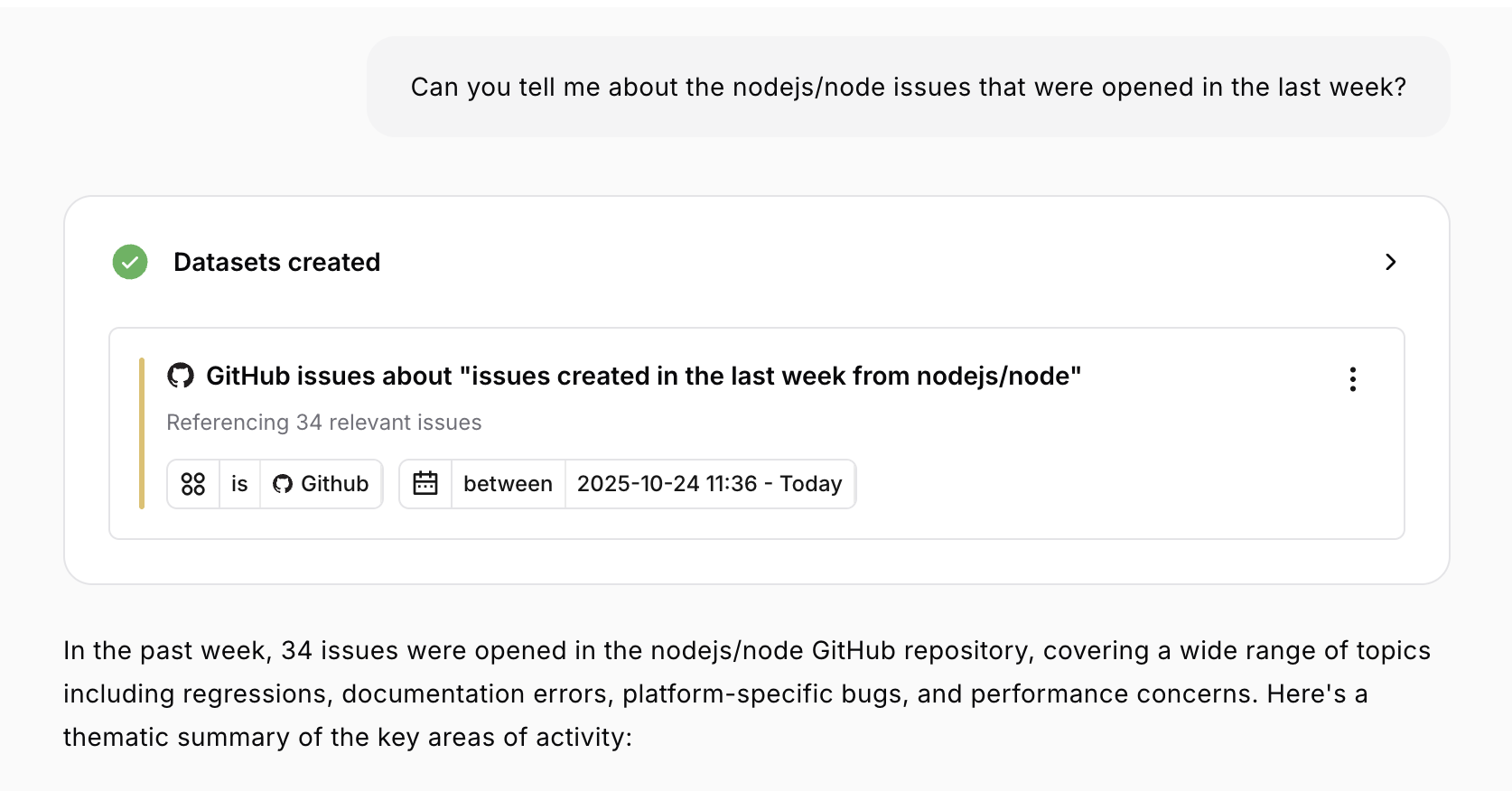
Asking About GitHub
- Maximum lookback: 60 days
- Can specify: “last week”, “past 30 days”, “this month”
GitHub Data Fields
For each issue/PR, Monty has access to:- Title and description
- State: Open, closed, merged (for PRs)
- Labels: bug, enhancement, documentation, etc.
- Dates: Created, updated, closed
- Key: Issue/PR number
- URL: Link to the item
- Assignees and authors (when available)
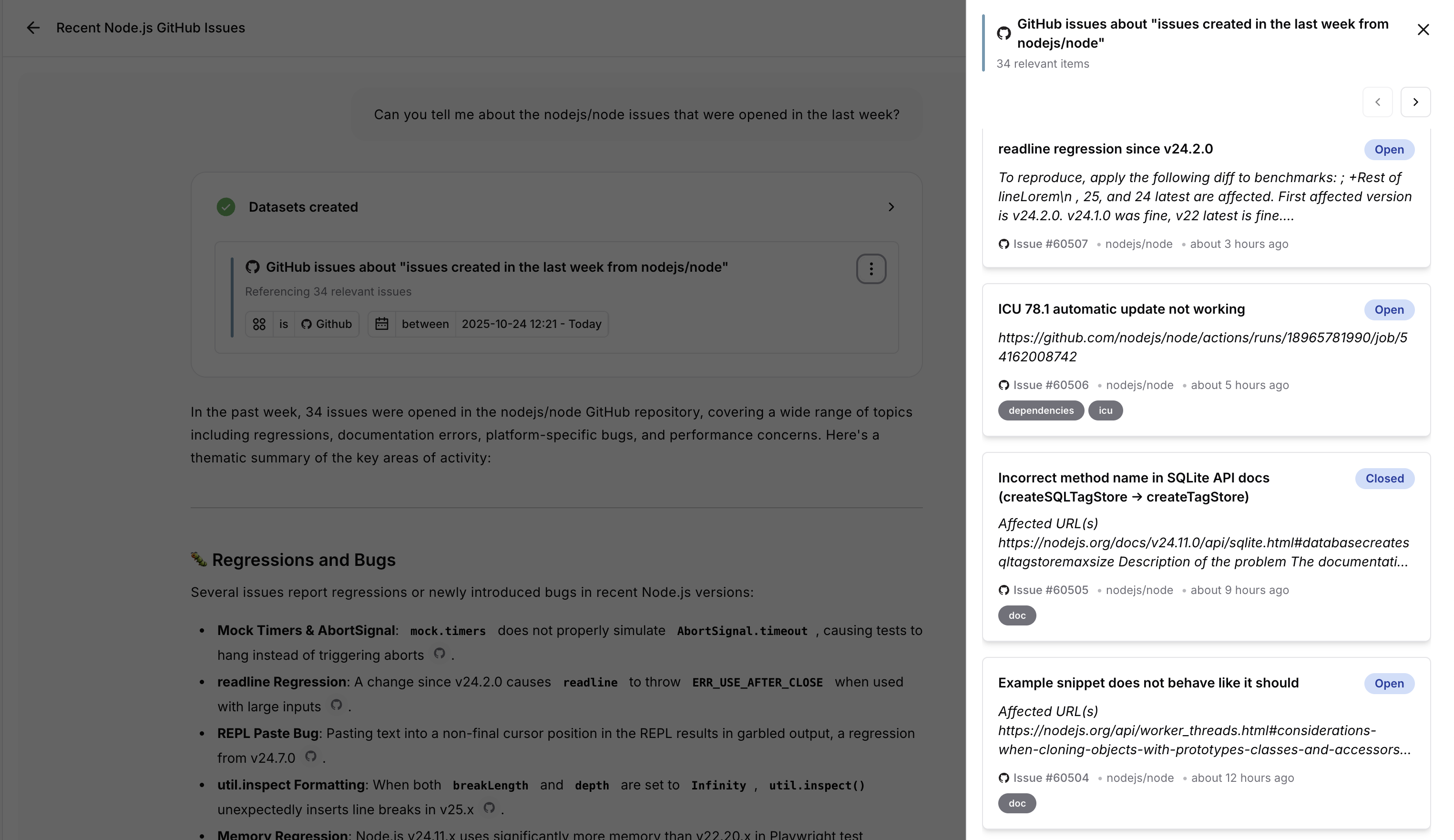
Use Cases
GitHub integration excels at creating development summaries. Ask for an executive summary of the team’s work over the past month, and Monty pulls all issues and PRs to summarize what’s been completed, what’s in progress, and what’s planned. This is particularly useful for sprint retrospectives—“Summarize closed GitHub issues from the last 2 weeks”—giving you a quick view of completed work. For bug tracking and feature planning, query open issues directly: “What bugs are currently open in GitHub?” or “Show me the most recent feature requests.” These queries help with prioritization and roadmap planning, and you can export the results for further analysis.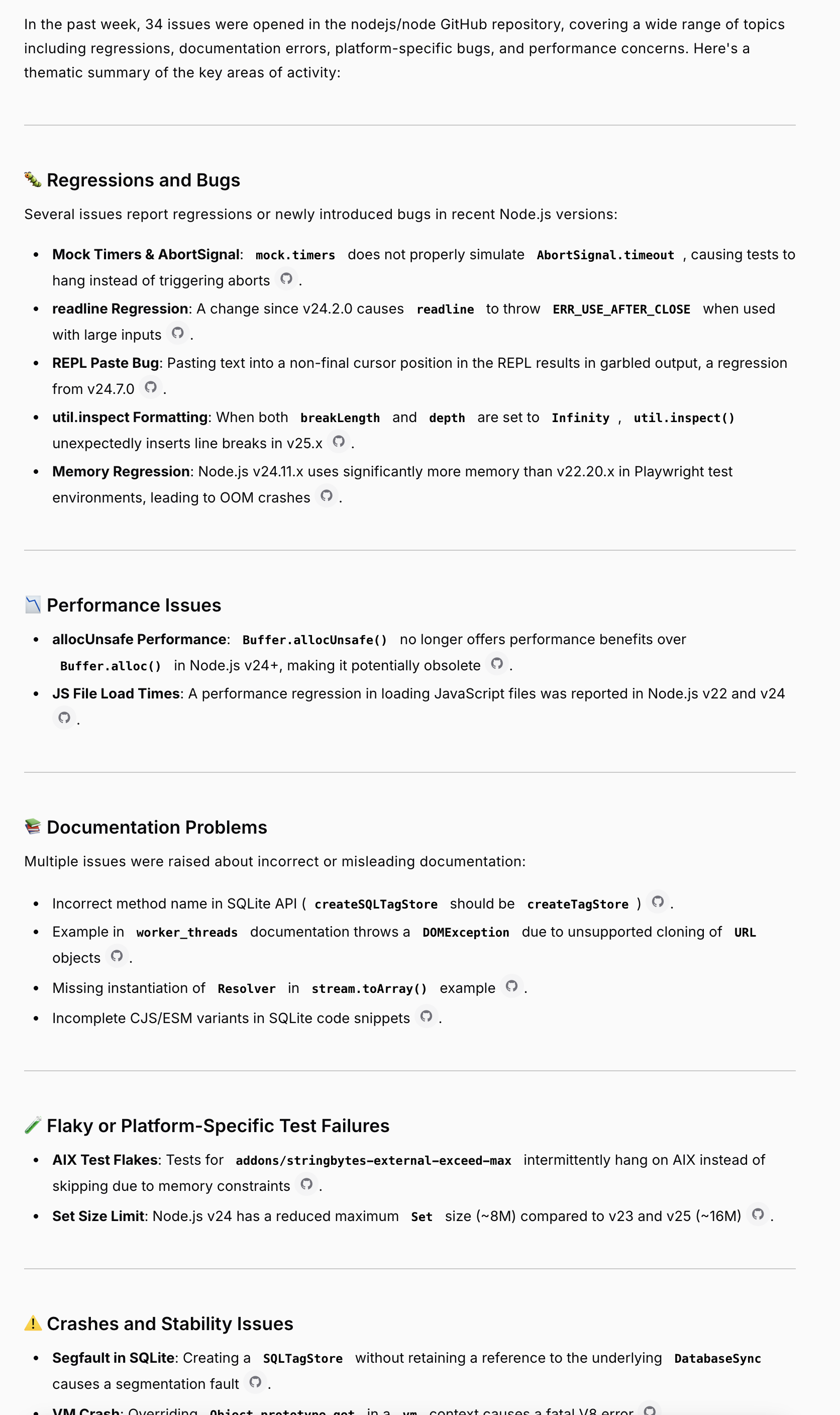
Combining with Customer Feedback
Link customer feedback to development work:- Prioritizing GitHub issues based on customer pain
- Checking if customer requests have tickets
- Reporting back to customers on fix status
Jira Integration
What Can Monty Analyze?
- Jira Issues: Stories, bugs, tasks, epics
- Status tracking: To-do, in progress, done
- Sprint information: Current and past sprint work
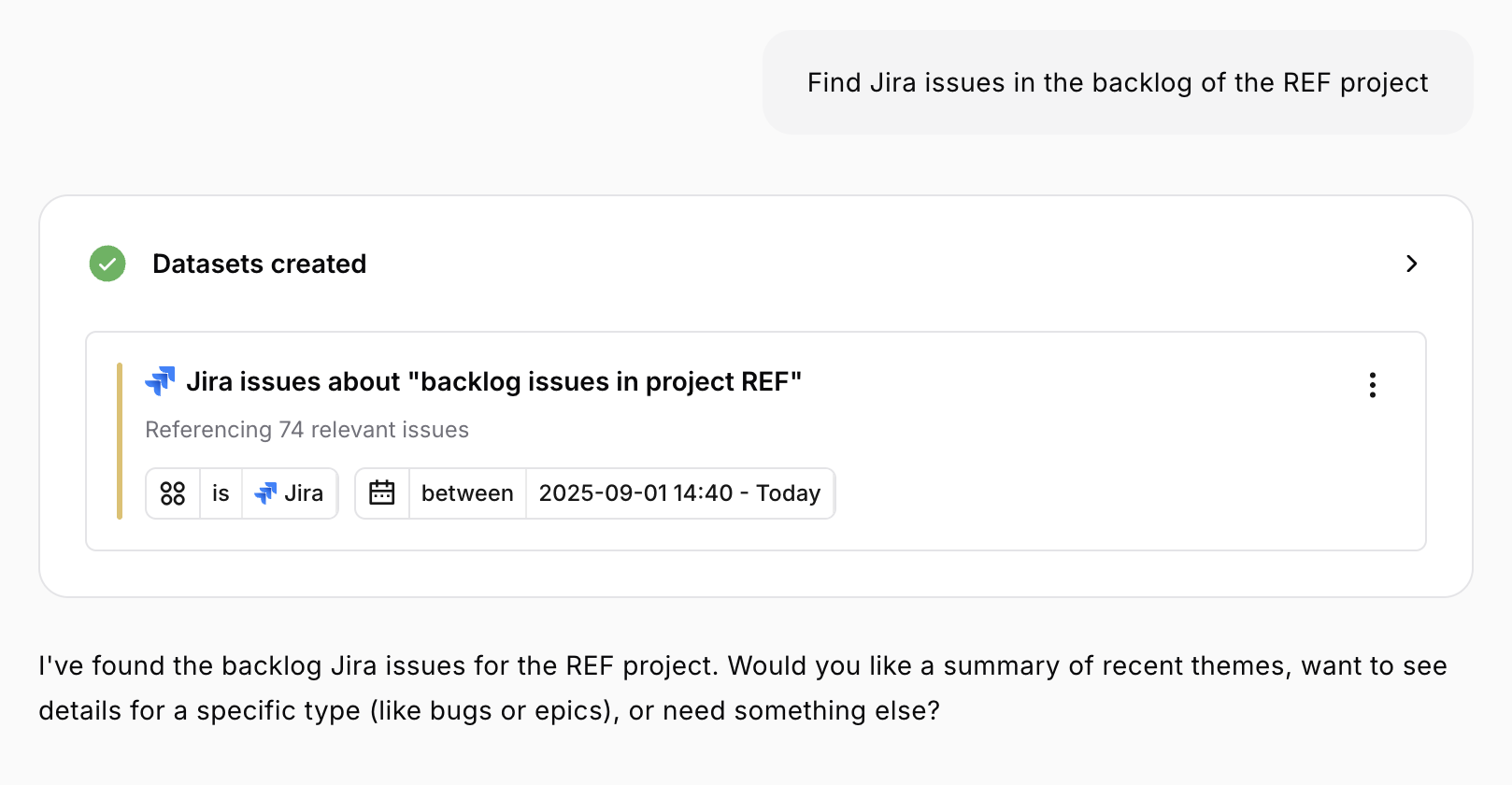
Asking About Jira
- Maximum lookback: 60 days
- Can specify: “last week”, “this sprint”, “past 30 days”
Jira Data Fields
For each issue, Monty has access to:- Summary and description
- Issue type: Bug, story, task, epic
- Status: To-do, in progress, done, etc.
- Priority: High, medium, low
- Dates: Created, updated, completed
- Key: Issue ID (e.g., PROJ-123)
- URL: Link to the Jira ticket
- Assignee and reporter
- Labels and components
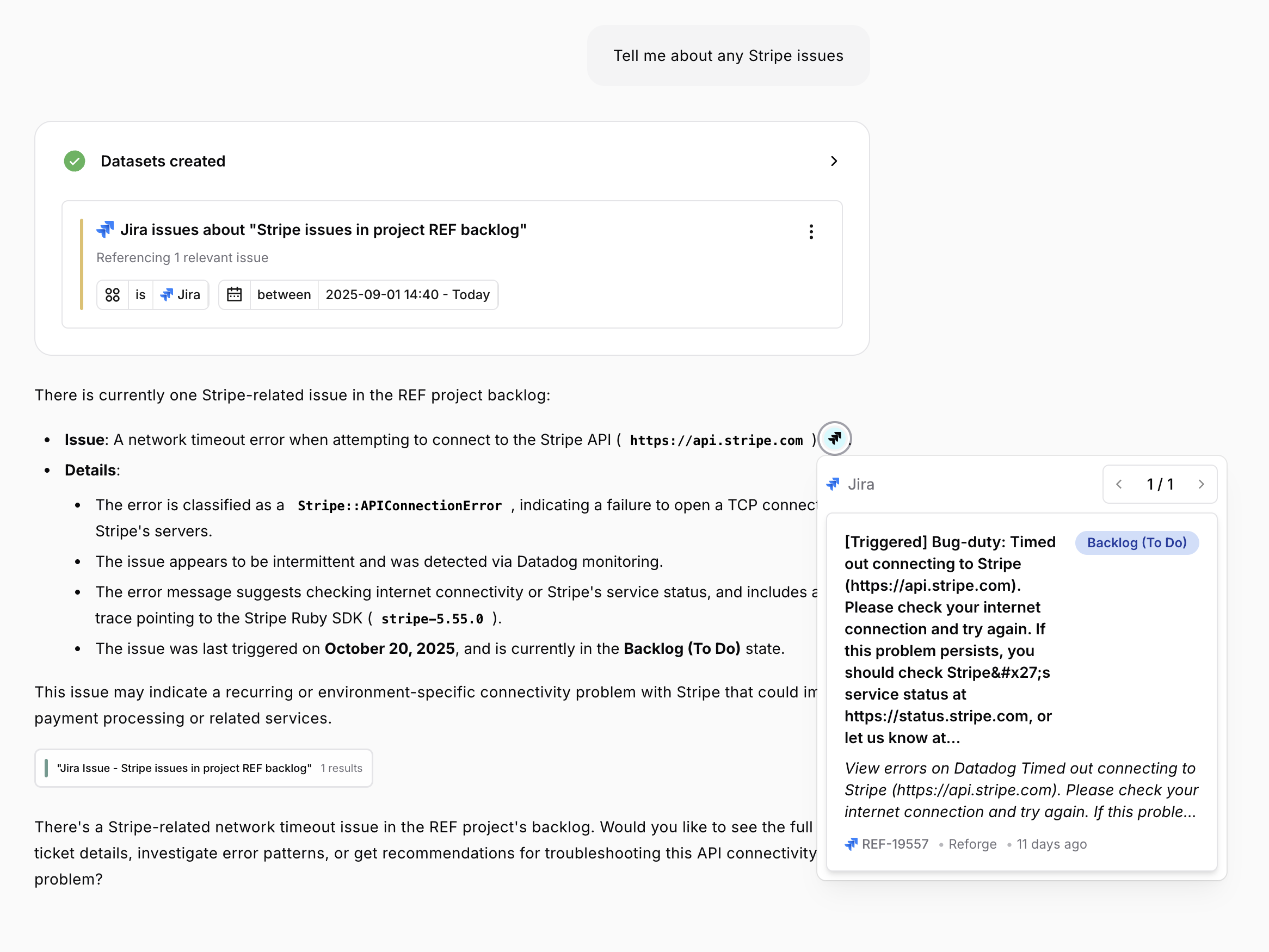
Use Cases
Team Status Reports:Combining with Feedback
Connect development work to customer needs:Linear Integration
What Can Monty Analyze?
- Linear issues: Stories, bugs, tasks, projects
- Workflow states: Team-specific states (backlog, in progress, done, custom)
- Cycles: Current and past cycles by team or number
- Priority + labels: Structured filters for urgency and tags
- Teams & assignees: Exact matches on team keys and user names

Asking About Linear
- Maximum lookback: 60 days
- Date filters can target
createdAtorupdatedAtdepending on whether you ask for new issues or recently updated work
Linear Data Fields
For each Linear issue, Monty has access to:- Title and description
- Workflow state: Team-aware state matching (e.g., “In Review”, “Blocked”)
- Priority: Mapped to your Linear priority scale
- Labels: Single or multiple labels mentioned in your question
- Projects and teams: Exact project name matches or combinations
- Cycles: Cycle name or number, including “current cycle” detection
- Assignee information
- Dates: Created and updated timestamps (60-day rolling window)
- URLs and issue identifiers
updatedAt field.
Use Cases
Team Health Checks:Combining with Feedback
Web Search
What Can Monty Search?
Monty can search the web for:- News articles about your product
- Public discussions and reviews
- Competitor information
- Industry trends
- Blog posts and social mentions
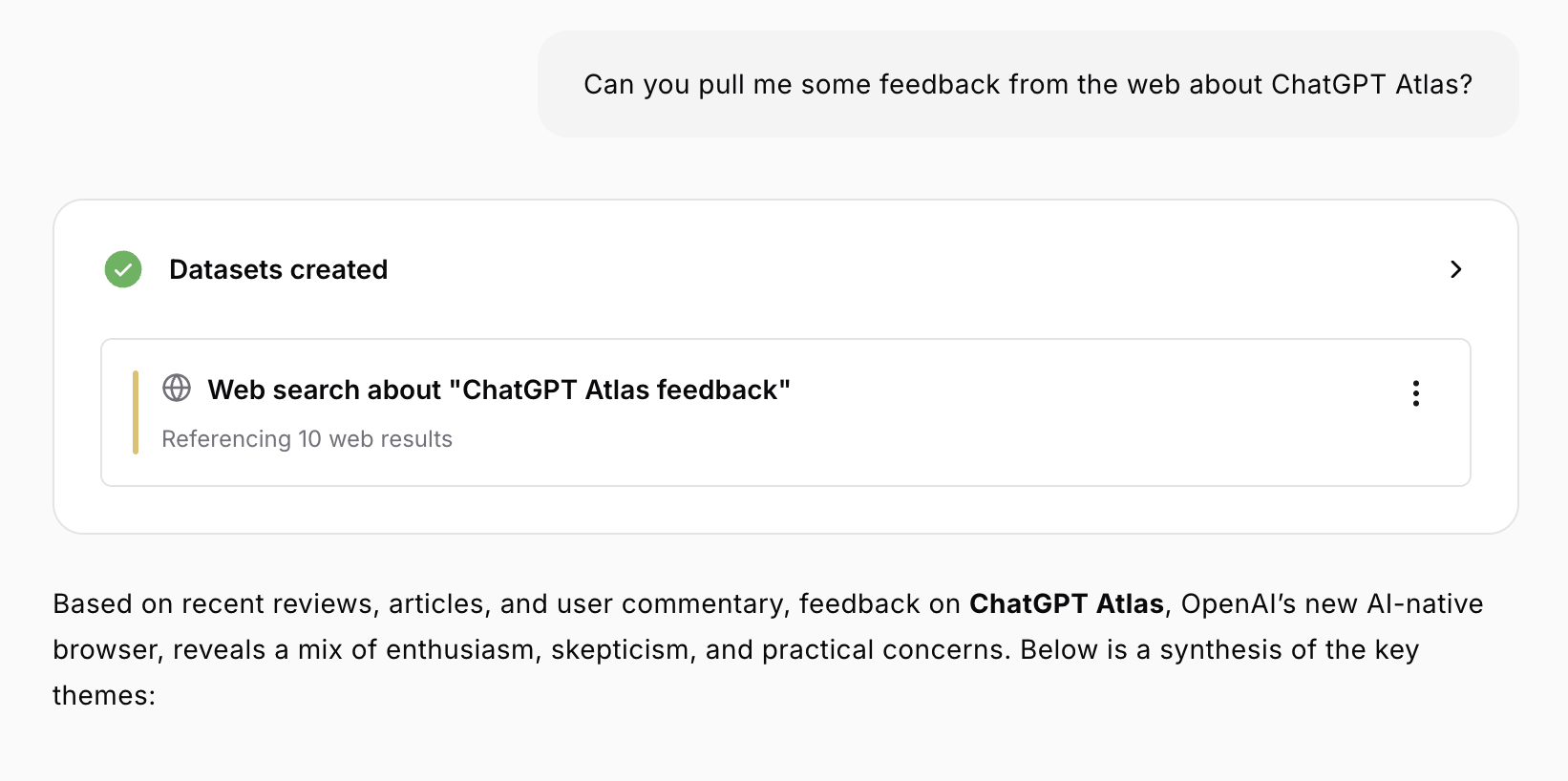
Asking About Web Content
Web Search Data
Results include:- Page titles
- Highlighted excerpts: Most relevant passages
- URLs: Links to sources
- Published dates: When content was created
- Relevance scores: How well each result matches
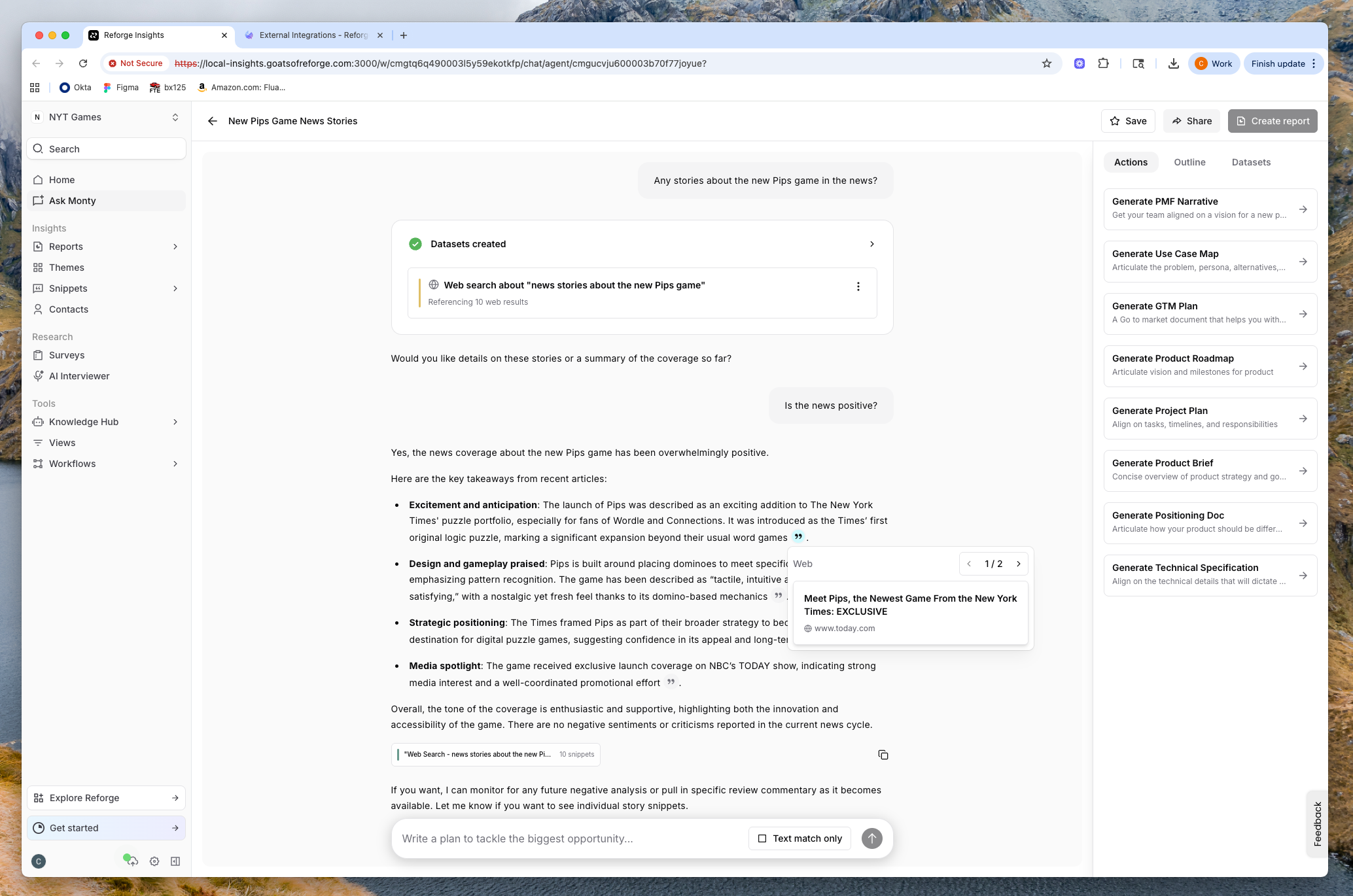
Use Cases
Launch Monitoring: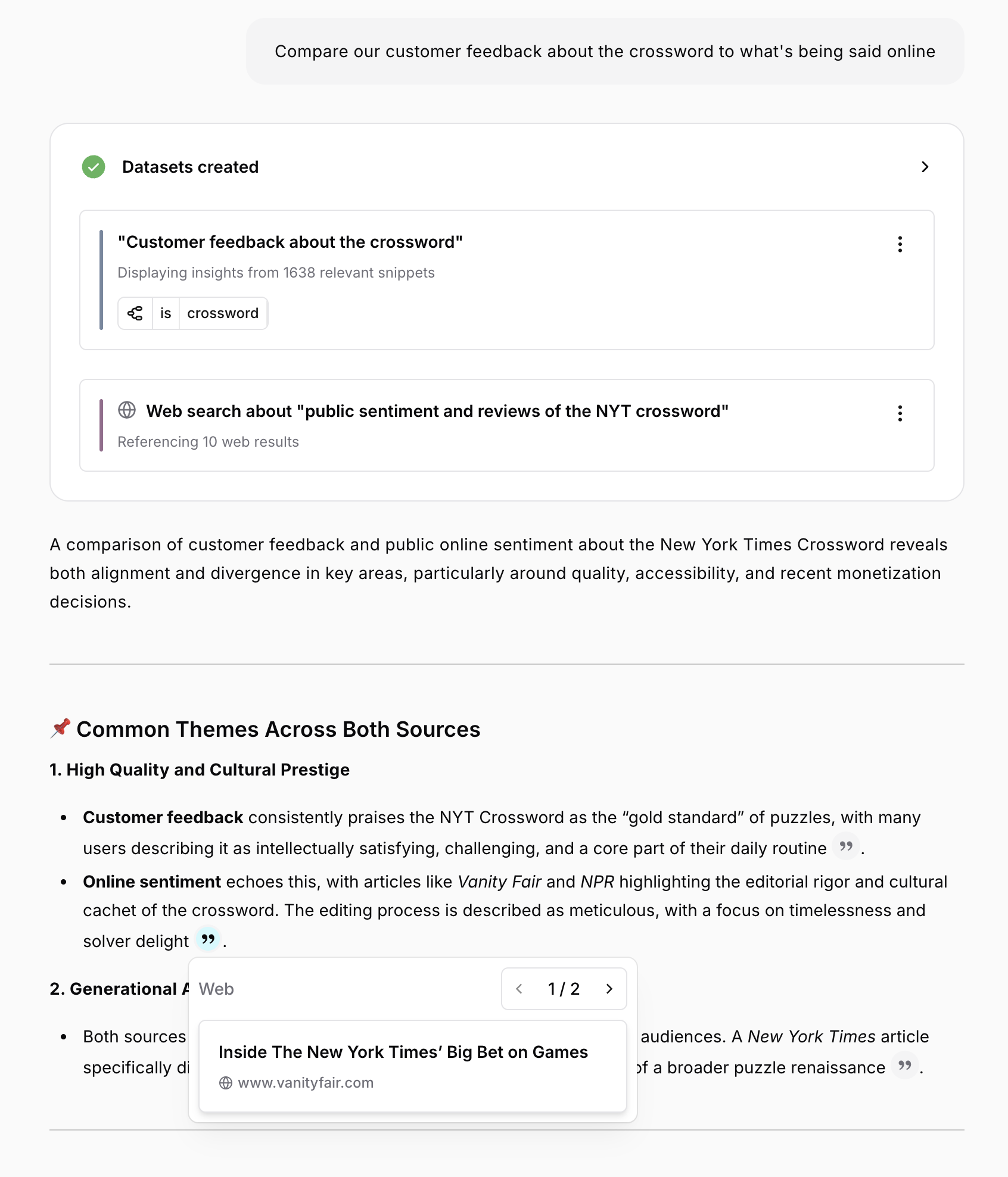
External Data Limitations
Time Ranges
- GitHub: Maximum 60 days of history
- Jira: Maximum 60 days of history
- Linear: Maximum 60 days of history
- Web search: Recent results prioritized
- Feedback: No time limits
Data Freshness
External data is fetched in real-time when you ask, but:- Recent activity may take minutes to appear
- Historical data depends on integration setup date
- Web search shows indexed content (may lag by hours/days)
Access Requirements
External integrations must be connected and authorized:- GitHub: Repository access configured
- Jira: Project access configured
- Web search: No special setup needed
Best Practices
External integrations work best when combined with internal customer feedback. Don’t just ask “What GitHub issues are open?”—instead, compare open GitHub bugs to customer-reported bugs to see which customer pain points have engineering attention. Use multi-source queries for comprehensive analysis: “Create a monthly product health report including customer feedback, development work, and public sentiment.” This gives stakeholders a complete picture across all data sources. Validate assumptions by connecting dots between sources. Ask “Is the payment issue customers are reporting in GitHub?” to check if customer pain has corresponding engineering work. Monitor launches holistically with queries like “Analyze the [feature] launch including customer feedback, GitHub activity, and web mentions.” Keep time ranges reasonable—under 60 days for GitHub and Jira due to API limitations. Time-bound your analysis: “What happened in GitHub during the last sprint?” or “Show me web mentions from the past week.”Next: Advanced Features →